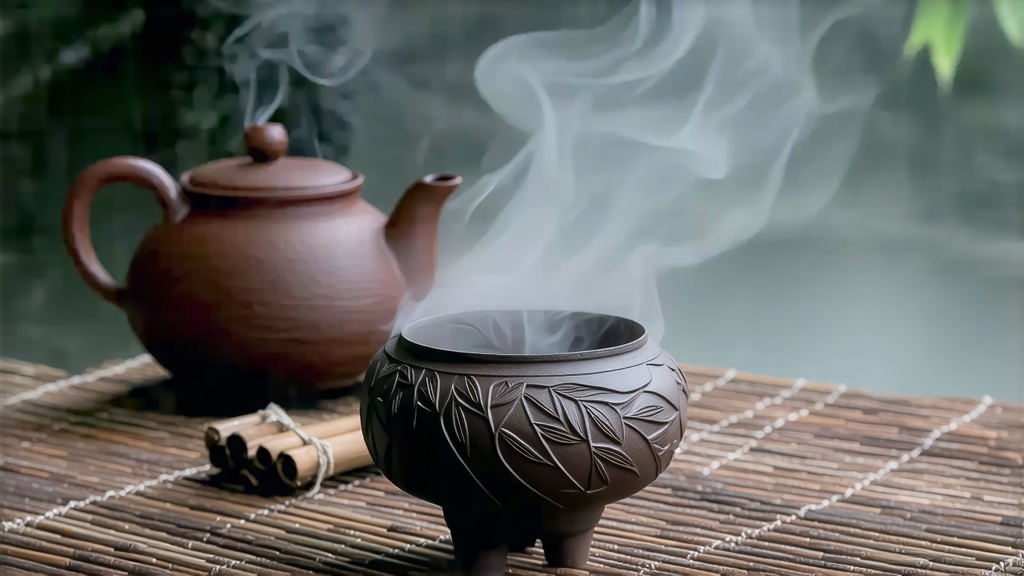
Tucked away in the humid, limestone folds of southern China’s Guangxi Zhuang Autonomous Region, Liu Bao tea has been quietly fermenting its way through five centuries. To most Western drinkers “dark tea” still means the earthy bricks of Hunan’s Fu Zhuan or the musty cakes of Yunnan’s shou Pu-erh, yet Liu Bao is the oldest continuously produced fermented tea in China, predating the invention of shou Pu-erh by nearly three hundred years. Its name simply means “Six Forts,” a nod to the six historical stockades that once guarded the trade route between the tea mountains of Wuzhou and the Pearl River Delta. From those Ming-dynasty fortresses, Liu Bao traveled by porter, raft, and junk all the way to Hong Kong and then on to Southeast Asia, where it became the daily cup of tin-mine coolies, Peranakan merchants, and, later, Kuala Lumpur’s Hainanese coffee-shop uncles. Today the same tea is prized by Guangzhou tea collectors for its betel-nut fragrance, ruby liquor, and uncanny ability to settle greasy dim-sum stomachs.
Liu Bao is not a single cultivar but a processing style applied to the large-leaf Camellia sinensis var. sinensis bushes that cling to the red-clay slopes of the Dayao Mountains. Local lore divides the tea into three “families” based on the original state-owned factories that codified the craft in the 1950s: the robust, bamboo-basket-aged “Three Crane” (San He) style, the lighter, quick-fermented “Wuzhou Tea Factory” style, and the small-batch “Private Mountain” style revived since the 1990s by independent artisans. Within each family, grades run from top-grade “Special” (特级) down to fifth grade, judged by leaf size, stem ratio, and the presence of golden tips. The most sought-after lots, however, are not graded at all; they are the pre-1980s “lao cha” discovered in the humid godowns of Hong Kong or the teak cabinets of Penang shophouses, their original paper wrappers stamped with faded Malay export codes.
The making of Liu Bao is a dialogue between moisture, microbes, and time. Plucking begins after Qingming, when the monsoon has swollen the leaves to the width of a thumb. Workers wilt the leaves briefly under mountain shade, then wok-fire them at a lower temperature than green tea, preserving enzymes that will later drive fermentation. While still warm, the leaves are rolled into tight cords and piled 50 cm deep inside bamboo-walled rooms. Here the crucial “wet-pile” (渥堆) phase begins: hot water mist is sprayed over the pile while it is covered with jute sacks, raising humidity above 85 % and temperature to 45 °C. Over the next twenty to thirty days, a consortium of Aspergillus niger, Blastobotrys adeninivorans, and local yeasts oxidizes tannins, breaks down cellulose, and creates the tea’s signature amber pigments. Every three days the pile is turned by barefoot workers who judge readiness by aroma—first grassy, then like cooked rice, finally the coveted betel-nut and dried longan scent. When the master declares the pile “alive,” the tea is steamed, pressed into 40 kg bamboo baskets lined with banana leaves, and moved to an above-ground warehouse where it will age for a minimum of twelve months, sweating out the last traces of pile heat while inhaling the incense-like vapors of the karst microclimate.
To brew Liu Bao well, one must unlearn the gentle reverence reserved for green teas and embrace a certain Cantonese swagger. Start by breaking off 8 g from the basket’s edge—never the center, where compression is too tight—then rinse the leaves twice with water just off the boil to wake the dormant spores. Use a thick-walled Yixing pot or a gaiwan whose lid barely fits, allowing the leaves to dance. The first three infusions should be flash steeps of five seconds, pouring in a high, thin stream to aerate the liquor. From the fourth infusion onward, add five seconds each round; a good Liu Bao will yield ten brews before its bass note fades. The liquor emerges the color of Tang-dynasty lacquer, clear at the rim but almost black at the core. Lift the cup to your nose: